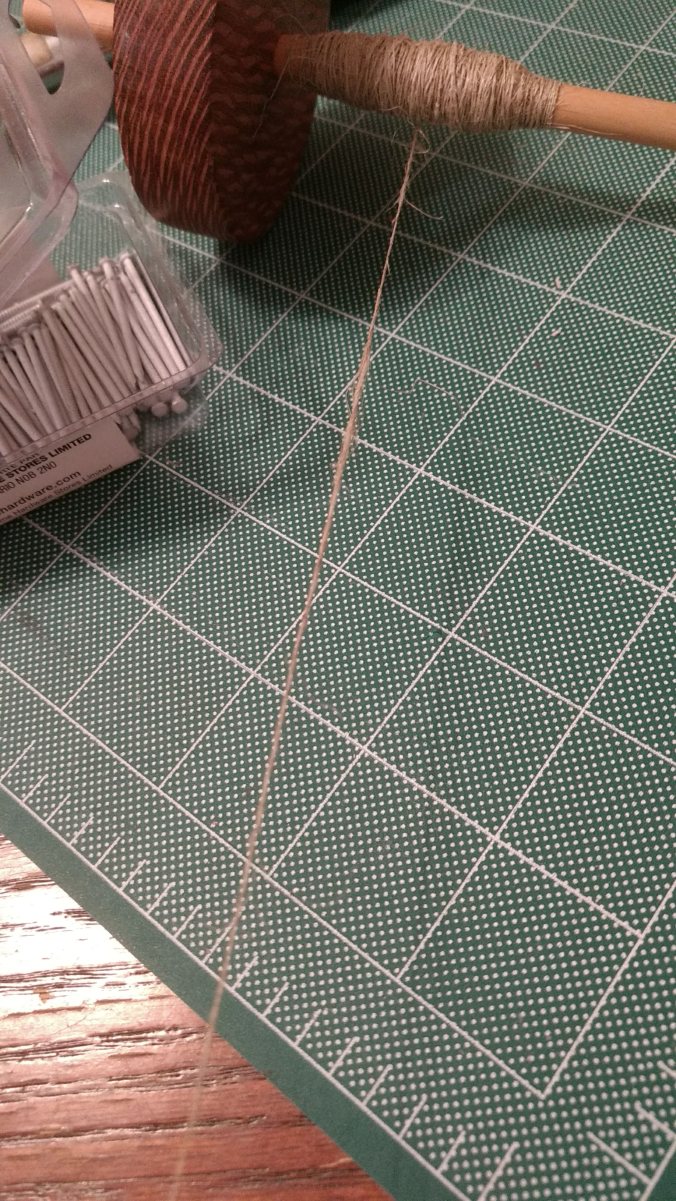I bet more blog posts about spinning have quoted that song than anything else in the world, and I just acquired another check mark on a right of passage or something. But in any case! Spinning! That’s what I’ve been working on of late. (Not <coughahem> the flax so much, cause wow, that is not my happy place yet. Apparently you actually have to practice to get better, how irritating.)
I’ve been continuing my wander through the stash, some of which is a few years old, some of which is ‘I think I’ve moved this twice, and we’ve been at the ‘new house’ for 8 and a half years’ sort of elderly. The colourful mystery wool yarn I was working on in the status update at the beginning of the month.. done. The purple/charcoal alpaca that came next.. done. The dark brown Cormo that came after that.. done. Now I’ve got some spectacularly terrible Corriedale on the spindle, dark brown first, but I have an equal amount of white. All of those have averaged between 25 – 50 grams, so none of them are especially long projects to get them spun up. I’ve been leaving them as singles, to wait and decide what they want to be when they grow up.

Colourful mystery wool!
That being said, the differences in spinning so many different things in quick succession has been fascinating. Basically after you wash the fleece you need to take the wool and make it ready for spinning. There are two main kinds of fibre preparation. (Spinning from locks of wool is a third, that’s a really light processing to just open them up, but I’m not covering it here.. I’ve never actually tried it. Another thing for the list.)

Purple alpaca
I’m working in big generalities here, there’s exceptions everywhere.. but carded wool tends to have its fibres all willy nilly and puffy full of air, and combed wool has it’s fibres all lined up in perfectly neat rows. Everything in my stash was commercially prepared for modern spinners, which means my fibre tends to not be a perfect example of either, but lean strongly one way or another. That carded wool all willy nilly and puffy? It is supposed to be spun with a long draw and makes woolen yarn, which is all bouncy and full of air and vaguely fuzzy. Combed wool that’s all straight and lined up? It is spun with short draw and makes worsted yarn (which is not the same as worsted weight yarn, because language is cruel.) that’s all firm and solid and has awesome stitch definition and makes great warp.

Cormo in a sunbeam
My colourful mystery fleece, the lincoln and the alpaca.. all worsted. The Cormo and Corriedale.. woolen. Oh the bounce! Oh the fuzzies! Oh I am such a worsted spinner! Long draw and I have a frustrating relationship, but we’re working on it. I’m also trying to let go the notions of perfection in these woolen yarns, there’ll be fuzzy bits, and kinda extra bits and please stop overtwisting the snot out of it! (That’s not panning out for me so much.)

Messy Corriedale batt
Still, it is nice to move a few things from the overflowing fleece bins to the overflowing yarn bins. Hrm. Perhaps not quite the stash busting I was hoping for!










